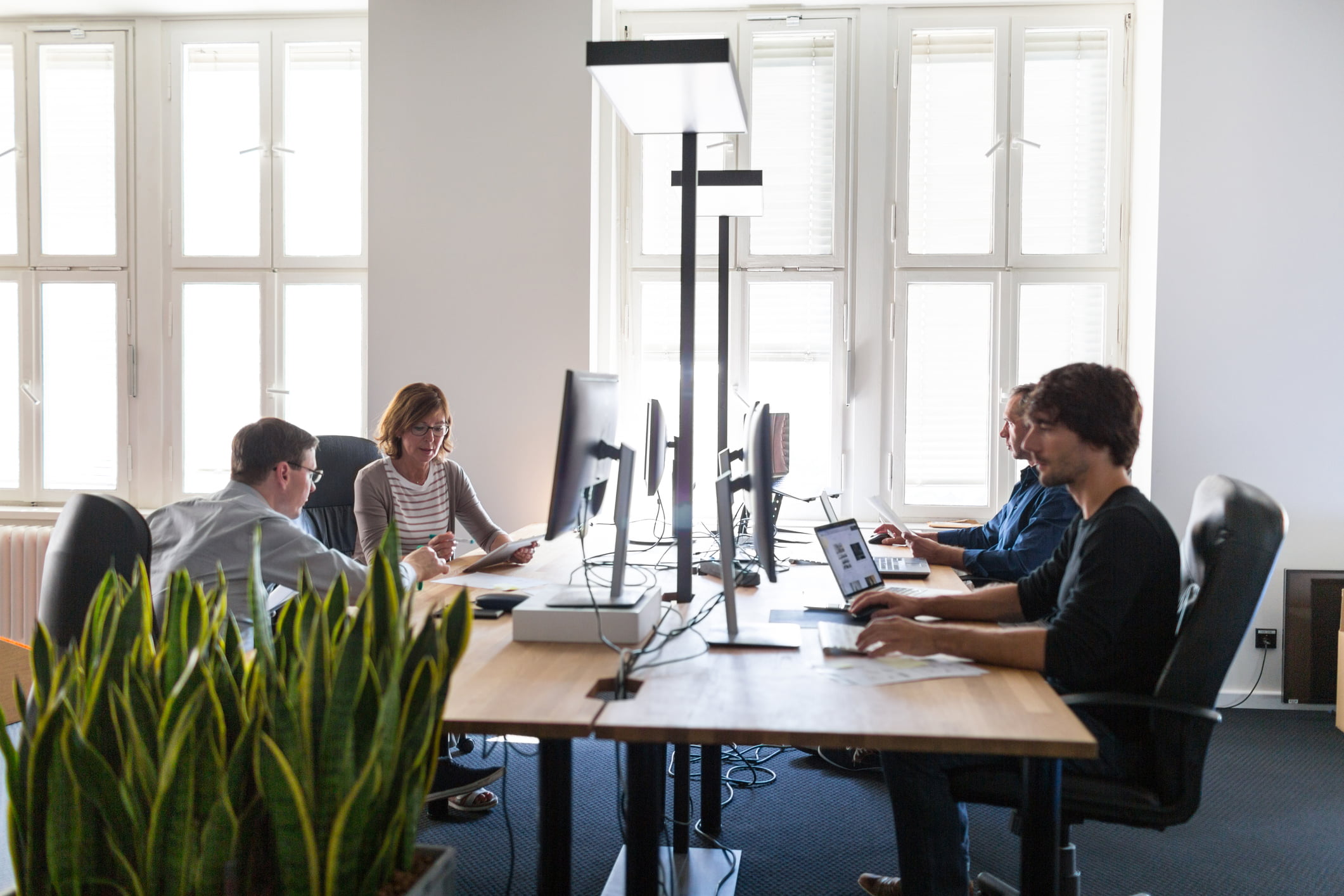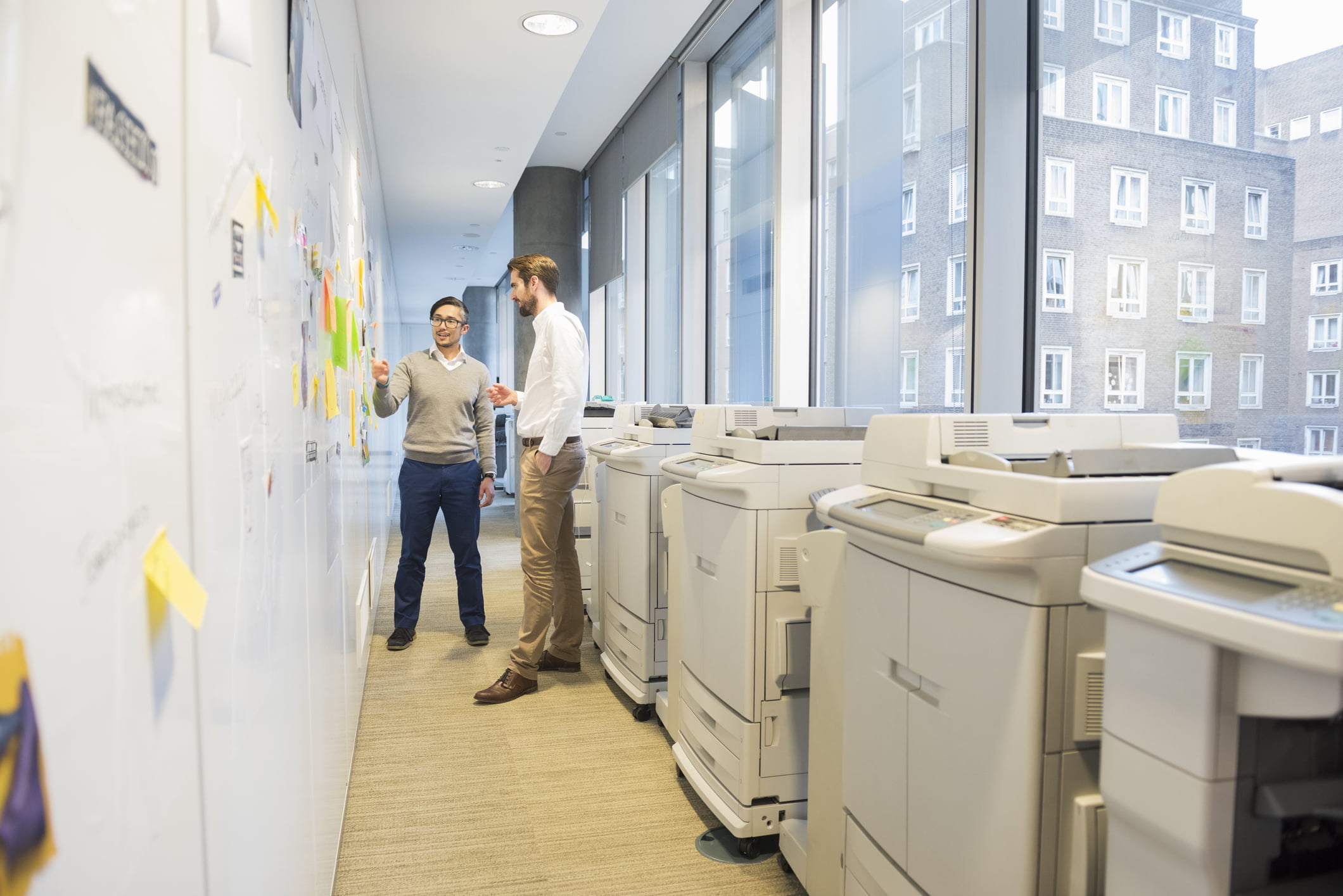Did you know that the average small and medium sized enterprise (SME) could reduce energy bills by 18-25% by installing energy efficiency measures and implementing behavioural change?
With energy bills and operating costs on the rise, introducing energy efficiency equipment and workspaces can save your business money on energy bills.
Here, we explore key areas that will benefit from energy efficiency improvements, including heating, lighting and equipment.
Heating
Heating is usually the most significant energy cost in a workplace, accounting for up to 40% of energy use in a non-domestic building. Preventing heat loss through topping up insulation and blocking draughts can significantly reduce heating costs, so it’s a good place to start improving energy efficiency. Things to look out for include:
- When were heaters or boilers last serviced?
- Are portable heaters being used by staff?
- Are the heating and air conditioning operating at the same time in the same place?
- Are hot water tanks, boilers and pipes insulated?
- Have you installed heating reflectors?
- Do you have smart heating controls?
- Who is responsible for changing the heating times at different times of the year?
- Are windows open when the heating is on?
The longer you have your heating on and the higher the thermostat is set, the more expensive your fuel bills will be. Turning the temperature up high on your thermostat does not warm the room up quicker.
Follow these steps to make a quick difference:
- Make a calendar reminder to set timers to the right date and time, and remember to include daylight savings. Make sure you consider weekends and bank holidays when setting controls.
- Ensure thermostats are set correctly. Set the heating in offices to 19°C and cooling at 24°C or higher. The temperature in corridors, storerooms and areas of higher physical activity can be set lower than 19°C.
- Ensure air conditioning is turned off in meeting rooms when people leave. Air conditioning in IT server rooms should be set as recommended by the manufacturer.
- Ensure that radiators are free from obstructions.
- Check that employee desks aren’t too close or too far from radiators and air conditioning.

Draughts
A good portion of heating costs can be prevented by stopping cold air from getting in, and warm air from escaping. The larger the gap, the bigger the cost. Here are some things you can do to prevent heat loss:
- Identify sources of draughts and fit appropriate draught proofing.
- Ensure employees are aware of the cost of wasted heat and air conditioning costs.
- Make sure unused doors and windows are securely sealed (excluding emergency exits).
- Inform employees that the thermostat should be turned down before opening windows.
Lighting
The longer that lights are switched on, the more energy will be used. Meeting rooms, storage areas and corridors are often lit unnecessarily. Creating reminders to switch off lights (this applies to employees and cleaners) before leaving a room can prevent unnecessary lightning costs.
It’s a myth that turning lights off and back on uses more energy than leaving them on all the time. When looking at efficient lighting in your business, consider the following:
- Are all your lights LEDs and energy efficient?
- Is continuous lighting needed in certain spaces? If so, consider switching to motion sensor lights.
- Are staff aware of their responsibility to turn off lights? Think about how you can encourage them to turn off lights when they leave a room.
- Are dim lights getting replaced?
Natural light is often overlooked. Relocating objects that block windows and desks in corners can sometimes mitigate the need for artificial lighting. It will also create a more pleasant working environment.
- Consider lighter paint colours or reflective paint.
- Consider vertical window blinds, which let in more light than horizontal ones when open or closed.
- Consider relocating workstations to well-lit areas.
Lighting controls and sensors are low cost and can be easy to implement. Occupancy sensors could cut energy use considerably from lighting. You could consider:
- Installing a timer switch to ensure lighting is switched off outside working hours.
- Reviewing internal and external lightning with sensors, including:
- Timed switches.
- Movement sensors.
- Daylight sensors.

Equipment
Office and work equipment can be high energy users. If a piece of equipment isn’t being used, it should be switched off; leaving equipment on standby wastes energy. There are a few things you can do to avoid unnecessary energy use:
- Switch from desktop computers to laptops, as laptops use less energy.
- Encourage staff to turn off monitors and computers at the plug when they leave and avoid standby.
- Optimise the brightness of monitors.
- Activate power saving settings on computers and laptops for all staff.
- Set printers to automatically power down.
- Ensure communal equipment is turned off at the end of the day.
Kitchen equipment can often be overlooked and is an easy place to make energy savings. Best practice posters which inform employees about unplugging unused devices, throwing out old things from the fridge so it’s not too full, and using a washing up bowl can be an easy reminder. Things to look out for include:
- Are the seals on refrigerated areas in good condition?
- Do you have an energy-rated fridge/freezer?
- Is the coffee machine/refrigerator energy efficient?
- Are kettles used to only boil the water that’s needed?
- Have you replaced microwaves/kettles with more energy efficient ones recently?
Production and manufacturing equipment are vital to operations, however older and poorly maintained equipment could be costing you. Here are some tips that will help with energy efficiency:
- Switch off motors during breaks and lunch.
- Turn off all machines such as fans, pumps and conveyors at the end of the day.
- Label switches correctly so staff know which operating machinery they can turn off and how to do it correctly.
- Optimise the speed of equipment to save up to half its energy consumption.
- Listen for leaks in compressed air pipes.
- Change air filters regularly.
For refrigeration to work efficiently, air needs to circulate both inside and out. Here are some simple measures to ensure your refrigeration units work as efficiently as possible:
- Keep doors closed.
- Switch off lights inside cooled spaces when not needed.
- Don’t overfill refrigeration units.
- Defrost freezers regularly.
- Repair door seals.
- Make sure there is space around refrigeration unit vents to allow air to be drawn in and expelled.

With these small but effective tips given to staff, your organisation’s workplace should see some energy savings, have adapted to start making energy efficient behavioural changes and you’ll be able to incorporate your savings into a wider sustainability strategy.
If you’re interested in measuring your organisation’s full carbon footprint, you can read about creating our measure, plan, act methodology.
This blog post was originally shared on https://energysavingtrust.org.uk/
-Dec-16-2021-10-43-06-49-AM.png)
Energy Saving Trust
Energy Saving Trust is an independent organisation – working to address the climate emergency. A respected and trusted voice on energy efficiency and clean energy solutions, they continue to work towards a smart, decarbonised, decentralised energy system.

-Dec-16-2021-10-43-06-49-AM.png)
